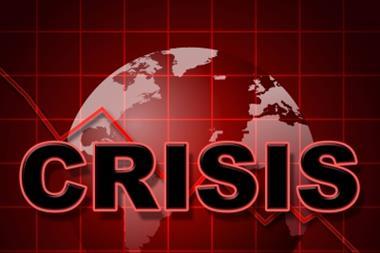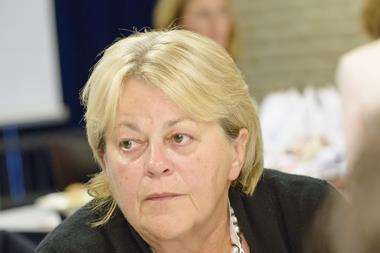Traditional approaches to managing risk are not adequate, and risk professionals must adapt now. Co-authors of Decision-Making in the Polycrisis era, Ben Cattaneo and Daniel Wagner, share their tips for rising to the challenge
The start of every year includes a ritual - the publication of various ‘risk lists’ enumerating the challenges facing organisations and societies over the coming twelve months and beyond.
Many of the topics this year have been studied intently for centuries, including geopolitical upheaval, pandemics, poverty, migration, and societal polarisation.

Others, such as the threats posed by malignant Artificial Intelligence (AI) or ‘virtual terror’, have been added to the multitude of preoccupations borne by decision-makers, legislators, risk managers, and philosophers alike.
For many decision-makers, these preoccupations are accompanied by a sense of powerlessness and being overwhelmed, stemming from the realisation that conventional approaches to addressing these uncertainties are no longer fit-for-purpose in the “Polycrisis Era”.
This term was first used about a 25 years ago to describe the existence of multiple significant crises occurring at the same time.
The component parts of the Polycrisis Era are, in their own way, potentially existential threats to individuals, organisations, and the world. Climate change, pandemics, mass migration, and poverty threaten large swathes of the global population.
Geopolitical upheaval has put the world on its most serious trajectory toward potentially severe inter-state warfare between the great powers and/or among regional states since the Second World War.
What does it mean for the risk profession?
For the risk management profession, the Polycrisis Era will be a time of tremendous difficulty and change, but also opportunity, because decision-makers will be seeking to derive guidance from it.
Worryingly, however, many of the traditional approaches to managing risk are not adequate to meet the challenge.
They tend to treat risks as discrete events divorced from organisational decision-making, whereas the Polycrisis is characterised by hyper-connectivity.
For instance, there is a connection between supply chain disruption risks stemming from virtual terror, climate change, geopolitics and even poverty (for instance, the southern Arabian peninsula where the Houthi rebels operate and are creating havoc on global supply chains, is characterised by extreme poverty).
A shift in mindset and practices is therefore required.
How risk managers can tackle the threats
Here are some of the things risk professionals can do to start rise to the occasion:
Enhance understanding
Risk professionals need to have more than a superficial understanding of each of the dimensions of the Polycrisis Era – and how they relate to one another. They need to be able to analyse and identify the most relevant factors and speak intelligently about topics as diverse as geopolitics, cyber security, and climate change.
It is not enough to outsource that thinking to elsewhere in the organisation. Rather, risk professionals need to know when to bring subject matter experts to the table, how to facilitate collective understanding, and bring these insights together to assist in enhancing the quality of decision-making.
Be laser-focused on decision quality
One of the key problems with many traditional risk management approaches (in addition to treating individual risks as discrete) is that they are often practiced in isolation from when and how organisations makes decisions. This can no longer be the case.
Risk professionals need to be laser focused on decision quality - helping decision-makers make the best possible decision given the information available at the time a decision is made. Over time, quality decisions add up to something meaningful and contribute to success, as well as create calm and confident leadership.
All risk professionals should understand what the practice of quality decision-making looks like. Many will need to develop skills in decision framing, robust evaluation of options, and an understanding of behavioural science.
Rather than something separate, risk management tools must be integrated within decision-making practices so that the probability of successful outcomes is understood, and critical assumptions are clear to decision-makers when decisions get made.
Tools and techniques such as risk modelling and scenario analysis should be servants to decision-quality, not its master. Activities that are not useful and are merely performative, such as risk matrices, risk registers, risk appetite statements, and risk reports should be minimised or if possible, discarded altogether.
Uncertainty ‘Hubs’
One challenge that typically overwhelms traditional risk management is that many aspects of the Polycrisis Era defy organisational structures and the ways ‘risk ownership’ is classically assigned.
For instance, in a large organisation, geopolitical upheaval can affect all business units, supply chains, and specific functions such as cyber security and governmental affairs. To address this, large or complex organisations can set up internal ‘hubs’ on specific topics such as geopolitics, disruptive technologies or climate change that combine commercial units, functional teams, and subject matter experts around a specific decision or area of concern.
At British Telecom (BT) for example, we established hubs on geopolitics, climate change, and responsible technology. These not only increased internal awareness and addressed aspects of silo-ed thinking and operating, but they also improved decision quality by identifying factors of potentially critical consequence before and alongside decisions relating to markets, products, or emerging regulations.
Anchoring topics to decisions in these hubs is critical as it transforms them from ‘talking shops’ to vehicles that can genuinely help navigate uncertainty.
All of this requires two important character traits on the part of risk professionals: curiosity and courage.
Curiosity enables deep understanding, and successfully facilitates difficult conversations by asking the right questions and looking beyond short-term concerns.
Courage allows risk professionals to ask tough questions, spot dangerous judgements and cognitive biases, call these out, and speak truth to power.
Organisations should look for risk professionals who have both in abundance. Risk professionals should develop these traits as if their careers depend on them.
The Polycrisis Era requires all of us to think differently. What we are all dealing with are no longer abstract lists of ‘risks,’ but real and complex challenges that will determine our futures.
Our individual and collective decision-making capabilities are the chief actors in this drama. If there is any profession which should be able to rise to the challenges posed by the Polycrisis Era, it is the risk management profession. Will it have the courage to do so?
Ben Cattaneo is the Founder of The Decision-Making Studio. Prior to this, he held a senior role at British Telecom (BT) where he led the design and implementation of its risk management process. Daniel Wagner is CEO of Country Risk Solutions, a widely published author, and has more than three decades of experience in cross-border risk management in the public and private sectors. They are co-authors of the new book Decision-Making in the Polycrisis Era.




















No comments yet